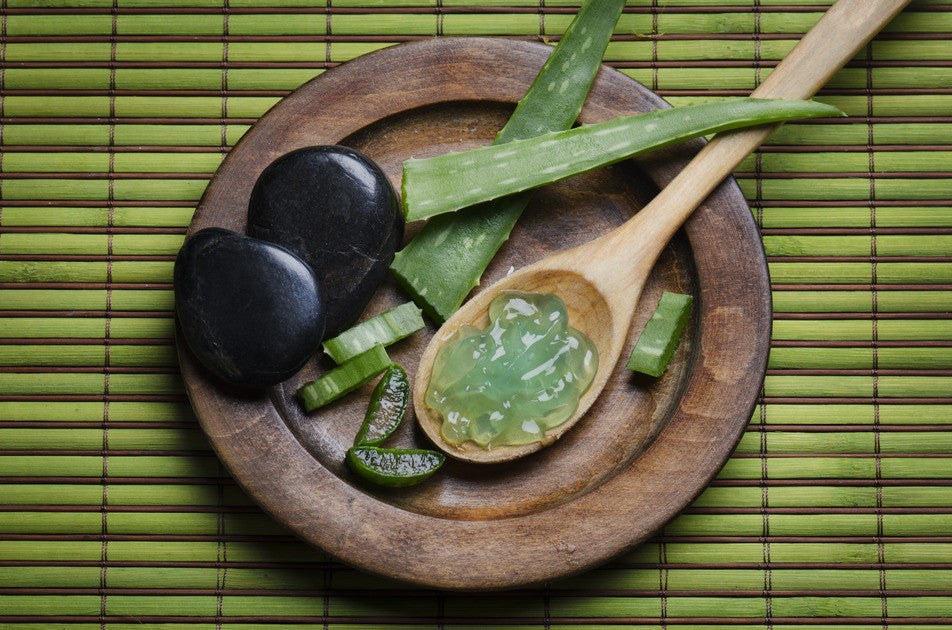Fibro Fix Blog — uses for aloe vera

3 Uses for Aloe Vera Beyond Sunburns 1
Aloe Vera - Beyond Sunburns
The aloe vera plant is a striking specimen that resembles a cactus with its thorny, fleshy leaves. It grows best in dry climates and is known to flourish in the arid regions of Africa, Asia, Europe, America, and some parts of India. The word “aloe” originally derives from the Arabic word “Alloeh,” meaning “shining bitter substance,” while the word “vera” is Latin in origin, meaning “true.” Thus, aloe vera is considered the true aloe, as it is the most widely known type of aloe plant (there are actually over 500 species of aloe) and is the standard pharmaceutical source.
Aloe vera has many nicknames, such as burn plant, lily of the desert, and elephant’s gall, and has been used for medical purposes in Greece, Egypt, India, Mexico, Japan and China for over 1,000 years. Some of its earliest known uses date back 6,000 years to Egypt, where it was depicted in stone carvings and was known as the “plant of immortality.” Used by the Egyptians for skin care and embalming, it was also placed in the tombs of deceased pharaohs as a burial present.
Although aloe vera is most recognized for its soothing effects on sunburns, research shows a variety of other potential benefits, including antioxidant properties and its ability to help support a healthy inflammatory response. Aloe has been studied for its effect on blood glucose, skin tissue engineering, wound healing, acne and even dentistry. It appears that much of aloe’s beneficial effects have to do with its antioxidant properties, meaning its propensity to help combat oxidative stress.
Blood Sugar
One of the areas in which aloe vera shows promise is with helping to support healthy blood sugar levels. In a 2014 study with 99 non-insulin diabetics, participants were split into three groups, where one group received no aloe while the other two received 100 mg and 200 mg of aloe vera gel powder respectively. Those in the 200 mg group saw greater reductions in fasting blood glucose, glucose levels after eating, cholesterol and blood pressure as well. Additional animal studies have supported these findings.
Skin Health
Topical aloe vera cream has been found to be helpful with open skin wounds, with improvements noticed by the end of the first week of use. An interesting area which may not immediately come to mind when we think of open wounds is acne, yet some of these lesions can easily open, which perhaps is the reason aloe has shown promise with mild to moderate instances of this condition. Compared to topical retinoids, which are typically the drug of choice for acne, aloe may prove to be a more pleasing choice, as it may offer more soothing effects and help ease the trauma to the skin.
Burns
Although not as common, burns can be more traumatic than other skin ailments. Aloe has been shown to ease some of the pain and skin pulling associated with changing a burn dressing in first and second-degree burns. In experiments with tape stripping, adding aloe to vitamin E proved more effective with burns than vitamin E alone.
It is interesting to note that aloe is quite popular within the glassblowing community. Many glassblowers keep aloe vera plants growing in their hot shops so that they are immediately available in the event these artists are accidentally burned. They simply remove a few “meaty” leaves from the plant, break them open at the widest part, and squeeze some gel out of the leaves directly onto the affected site.
These wonderful properties could be the reason aloe vera shows promise in other areas such as the GI tract and gingiva (gums). With so many of aloe’s beneficial properties being studied, we are sure to see more updates coming in these, and possibly other, areas.
- David Brady
- Tags: aloe vera aloe vera blood sugar uses for aloe vera
